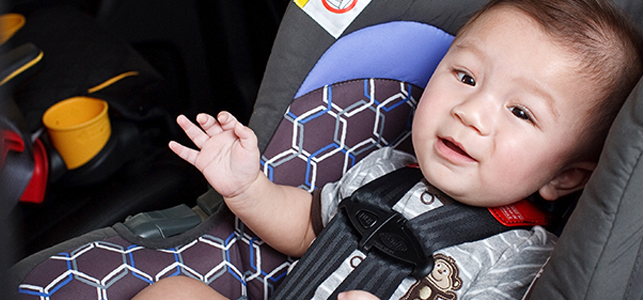
Did you know that road injuries are the leading cause of preventable deaths and injuries to children in the U.S.?
When used correctly, child safety seats can reduce the risk of death by as much as 71 percent, but three out of four car seats are not used or installed properly.
Corri Miller-Hobbs, program coordinator for Safe Kids Virginia at CHoR, answered our top questions about car seats – the different types, how to choose and how to keep kids of all ages safe while riding in the car in recognition of National Child Passenger Safety Week.
There are three main types of car seats.
Before making a purchase, parents should read the label, or if buying online, read the product description and specifications of the seat. Look for the weight, height and age limits to be sure the seat is right for your child.
Even though there are many different models and brands to choose from, all car seats meet the same U.S. federal safety standards. Inexpensive seats will meet the same standards as more expensive seats, but may not have all of the comfort features, such as padding for the harness straps. If you prefer more features, be sure to buy a car seat that has them provided. Adding things later (called aftermarket products) can make your child less safe.
Every car seat has an expiration date. The expiration date can be found on the label or imprinted on the plastic. Most seats expire after six years, but each seat is different.
When throwing away an expired or unsafe car seat, take it apart and put the pieces in separate trash bags to prevent someone else from using an unsafe seat.
Never buy a used car seat from garage sales, flea markets, second-hand stores or online if you do not know the previous owner or the complete history of the seat and avoid borrowing one from someone you don’t know. A used car seat is unsafe if it has been in a crash or if it is missing parts, labels or instructions. A seat is also unsafe if the manufacturer has issued a safety recall and it has not been fixed. There is just no way to be sure that a used car seat is safe.
Follow these four steps:
Read more tips on getting the right fit for your child.
There’s no hurry. The safest car seat for children under the age of 2 is a rear-facing one. Riding in a rear-facing seat helps protect your child’s head, neck and spine in a crash. Children grow immensely in the first two years, so parents and caregivers may have to move their child from a smaller rear-facing-only seat to a bigger convertible or 3-in-1 seat installed in the rear-facing position.
Always check the label on car seats. Children will be ready for a larger rear-facing car seat when they pass the weight or height limit on the seat label or when their head is within one inch of the top of the seat. Children with longer legs can still stay in the rear-facing position comfortably by crossing their legs. All children, even those with special health care needs, follow the same rules for staying safe in a car.
Child passenger safety technicians do conduct safety seat checks and teach parents/guardians how to install seats correctly. During COVID, however, many of the seat-check stations are closed or limited. Safe Kids Worldwide and the National Highway Traffic Safety Administration offer great online tools and tips to help you ensure the right fit and installation for your child.
The Virginia Department of Health has a low income safety seat program that offers free child safety seats and booster seats for income-eligible children in the state. We want to make sure that every child can ride safely in vehicles!
Learn more about Virginia laws on child safety seats.